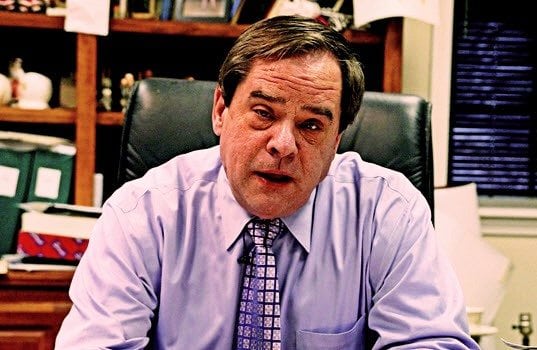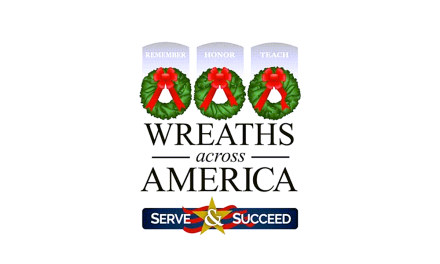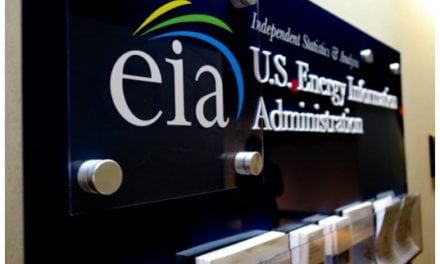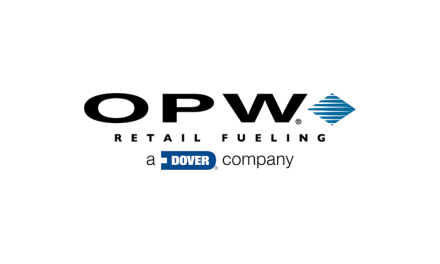By Keith Reid
Bob Renkes, the Petroleum Equipment Institute’s executive vice president and general counsel will retire from PEI on May 31, 2017, after 38 years with the association. PEI is composed of more than 1,600 companies engaged in manufacturing and distributing equipment used in the fuel and fluid handling industry. Members are located in 50 states and 81 countries.
Rick Long, the organization’s current general manager will be taking over as executive vice president and general counsel for Renkes when he retires.
Although the retirement date is still some months away, Fuel Marketer News (FMN) decided to interview Renkes as he prepares for his last PEI Convention.
FMN: How did you come into the industry?
Renkes: I had a job selling compact refrigerators to college kids and I thought we were lacking direction. I saw that Howard Upton was advertising for what they called an administrative director. He was looking for an attorney, because Howard was an attorney. I interviewed with him, and fortunately, for a good grade during law school at Wake Forest I wrote a chapter of my instructor’s book “Parliamentary Procedure Trends in Nonprofit Organizations.” Well, of course, PEI is a nonprofit organization and I didn’t have much work experience but Howard Upton had that book on his bookshelf and he said, “Are you the author of this chapter?” I said, “That’s me.”
There were 117 applicants, including a couple that are pretty well known, but they had to move from another place. My salary requirements weren’t much and I lived in town and I was offered the job. The day after I was offered the job I got a raise with my other job and I had to go back and tell Howard and he gave me an extra $50 a month. I walked in, and Howard had a pretty good sense of humor and he said, “Oh, didn’t you get the message? We decided to go another way with this job,” and my mouth dropped open. He said, “No, welcome. Congratulations. We’re glad you’re here.”
I ended up coming to work for him on January 2, 1979.
FMN: What struck you about the industry when you started?
Renkes: The people. Our members are good, hard-working, supportive people. They give of their time and they give of their money to support the industry. We have over 240 volunteers on our different committees. Our officers aren’t paid. They serve. I’m into service. They find times in their careers to serve the industry that did so well by them. Our customers are good people and they appreciate working with honest, hard-working folks as well. And I have to give a shout out to those few regulators we work with. They’re good people because they want to succeed. They want to do the right thing. Never once did I come in the office and say I don’t like working for these folks, never once.
FMN: What were your thoughts in 1987 when you were going to move into the leadership position at PEI?
Renkes: Howard was an exemplary writer. He wrote for Life Magazine, the Saturday Evening Post. He was a speechwriter for Admiral Forrestal in World War II; he was number one in his graduating class at the University of Oklahoma. Howard was just an excellent writer. I was not and I still am not. I’ll never be the writer that Howard was. I would read all of his stuff and we had a small office, and so the first five or six newsletters I copied his style because I was able to do that.
Replacing a legend after 36 years was daunting, but I had a lot of supportive members. Let’s see, in ’87, I was 35 and replacing a legend that had more years in PEI than I had in life.
FMN: What were some of the big issues the industry has faced since 1987?
Renkes: Stage II Vapor Recovery coming in and then going out. The metrication program back in 1980s when we started going to the liter, but that fell through. The major oil companies leaving the industry. They numbered in the tens of thousands of company-owned stations. We don’t have that now. The ultra-low sulfur diesel program. California Air Resources Board (CARB) certifications. Increased ethanol blends. Recently, even though it’s not on the forefront, compressed natural gas (CNG) and liquefied natural gas (LNG). Back when we started, we were dealing with penny wheels and we were under a dollar a gallon but that was changing.
The Underground Storage Tank Program was probably the biggest thing that we dealt with in the industry during that time. We lost a lot of stations. You can still drive around now and see a tattoo parlor, a jewelry store, a physical therapist office—but all of those used to be service stations.
Each of these developments benefited some aspect of the PEI membership, to the detriment maybe of others. But we didn’t urge those requirements on Congress or the regulatory agencies, they just plain happened. I couldn’t even think of those things. Okay, so we have an ozone problem and gasoline vapors cause cancer in laboratory rats, so let’s collect those vapors, and in some areas, not in all of them. Who would’ve thought that?
FMN: You have an awful lot of constituencies within your organization, and you touched on it already. When it comes time to harmonize a solution, how do you address such a diverse spectrum of wants and needs?
Renkes: All we do is give them the facts and give them the accurate numbers. Let them make their own decisions. How much does it cost for vapor recovery? I’ll tell you. I’ll go out and I’ll survey 10 members from across the country and I’ll tell you how much it costs to put it in. I’ll tell you how much it costs to take it out, how much increased ethanol blends would cost, how much a tank program would cost. That’s how people learned to trust PEI. We didn’t lobby for one thing or another. They could come to us and say what’s involved? Can we do this?
We serve our members and talk to them, and do not take an advocate position. When something benefits, let’s say a tank guy, then maybe the canopy guy doesn’t get business. People only have so much money. So when asked we give the facts the best way we can.
FMN: PEI also was out in front on the static electricity concern with fueling.
Renkes: Of all the things over the years I think I’m most pleased with Stop Static. That’s when we thought initially that the vapor recovery nozzles or cell phones were causing sparks when people would fuel and then have ignition. We ultimately found out that it was the motorist as the source of ignition. Moving around in the seat, not closing the door, a non-vapor recovery nozzle and having the vapors come out of the fill opening and the right combination of vapors and oxygen causing a fire.
When we identified what that was—and PEI did that with help, but we did that—then we saved people from hurting themselves. I don’t know how many we did, but I liked doing that. It was a long program, I believe from 1995 until 2005, and now, because the vapors are moved to the engine compartment and burned in the onboard canister, we haven’t had a fire in three and a half or four years.
Click Below for Next Page









